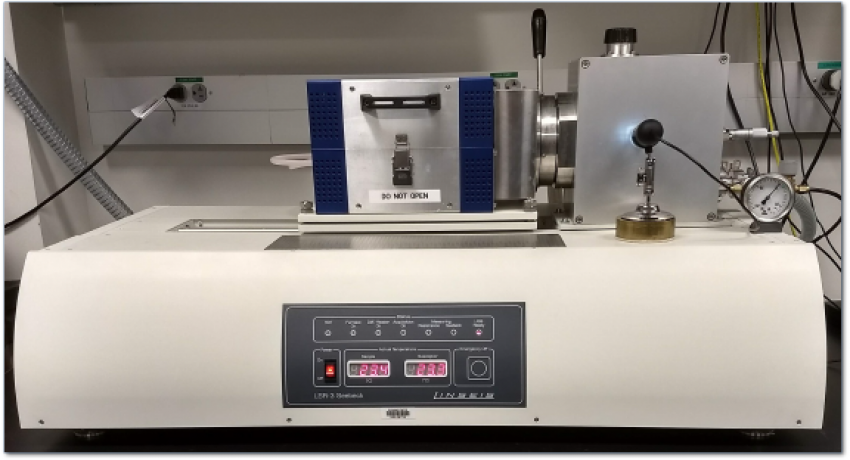The Seebeck coefficient of a material, sometimes referred to as thermopower or thermoelectric power, is a measure of the magnitude of an induced thermoelectric voltage in response to a temperature gradient across that material, which is induced by the Seebeck effect (one of the thermoelectric effects). The Seebeck coefficient may have different signs for different materials, negative for negatively charged carriers (electrons) and positive for positively charged carriers (electron holes). The Linseis LSR allows the simultaneous determination of the Seebeck coefficient and also four terminal electrical resistivity of a bulk or thin film sample over a broad temperature range.

- Minimum sample geometry: 1 mm × 1 mm × 6 mm
- Maximum sample geometry: 4 mm x 4mm x 22 mm
- Temperature range: 25°C to 800°C
- Non-volatile materials accepted
- Temperature Range: Room Temperature to 800°C
- Current Source: Up to 160mA
- Sample Resistance: must be less than 2.5 kOhms
- Atmospheres: Pure Helium and Forming Gas (1% Hydrogen balanced with Helium) atmospheres allowed. Helium is always available. Forming Gas may need to be ordered.
- Sample Geometry:
- minimum is 2 mm × 2 mm× 6 mm (Larger is highly recommended)
- maximum is 4 mm x 4mm x 22 mm
- Sample must have parallel ends at right angle to contact side
Reference Literature:
Wspc Reference on Organic Electronics: Organic Semiconductors. Editors: Marder Seth R., Bredas Jean-Luc World Scientific (2016)

